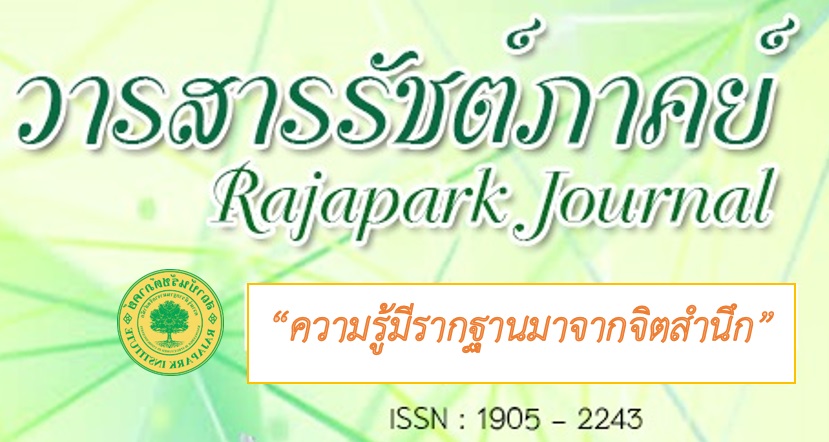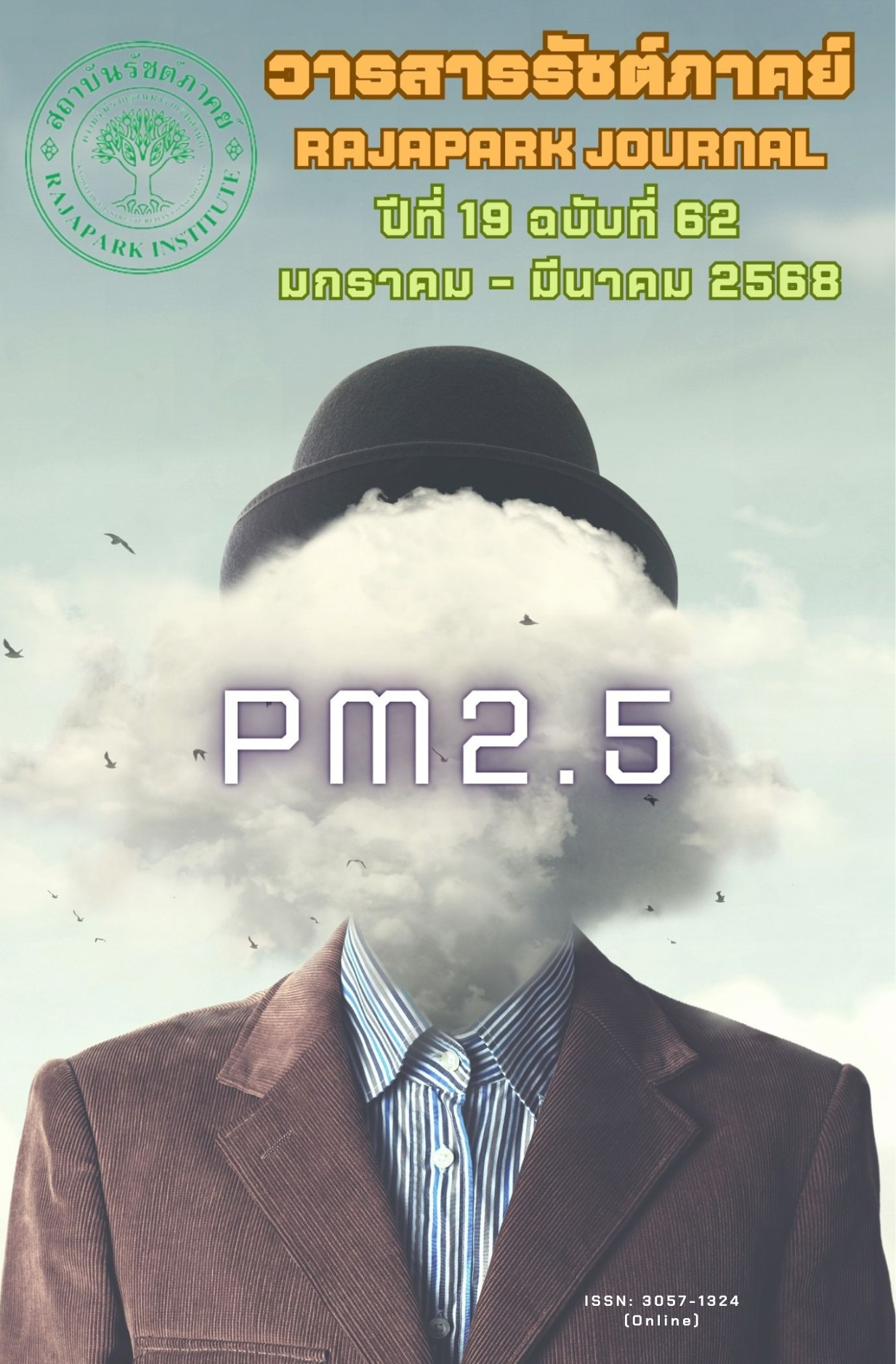Sustainable Development Strategies of Private Universities under the Guidance of Social Responsibility—A Case Study of Private Universities in Guangdong Province
Main Article Content
บทคัดย่อ
Talent training and scientific research are the most basic functions of private colleges and universities, and they should also become the social responsibility that colleges and universities must fulfill. This research aimed to: 1. analyze the impact of talent training responsibility and scientific research responsibility on the sustainable development of private colleges and universities through social performance; 2. strive to explore the sustainable development strategy of private universities from the aspects of strengthening the establishment of talent training brand and enhancing the strength of scientific research. This study conducted a random sample survey on the questionnaire distribution; 535 questionnaires were recovered, the answer time was short, and the information was incomplete. A total of 501 valid questionnaires were collected, which were investigated and analyzed below. In this study, using the SPSS. Version 27 performed the reliability and validity analysis of the questionnaire data. The research results were as follows: 1. Talent cultivation and Scientific research responsibility significantly positively impact Sustainable Development Strategies of Private Universities; 2. Social responsibility plays a partial intermediary effect. The results and conclusions provide a reference for exploring the sustainable development of Chinese private universities under the social responsibility framework.
Article Details

อนุญาตภายใต้เงื่อนไข Creative Commons Attribution-NonCommercial-NoDerivatives 4.0 International License.
ทัศนะและความคิดเห็นที่ปรากฏในวารสาร ถือเป็นความรับผิดชอบของผู้เขียนบทความนั้น และไม่ถือเป็นทัศนะและความรับผิดชอบของกองบรรณาธิการ
เอกสารอ้างอิง
Adams, C. A. (2013). Sustainability reporting and performance management in universities: challenges and benefits. Sustainability Accounting, Management and Policy Journal, 4(3), 384-392. https://doi.org/10.1108/SAMPJ-12-2012-0044
Altbach, P. G., & Salmi, J. (2011). The road to academic excellence: the making of world-class research universities. The World Bank.
Arntzen, A. A. (2010). University social responsibility: An ethical approach for the development of civic responsibility. In Information and Communication Technology Ethics and Social Responsibility, 1-15.
Babbie, E. R. (2020).The practice of social research. Cengage Learning.
Babich, L. P., Bicknell, W. J., Culpepper, L., & Jack, B. W. (2008). Social responsibility, international development, and institutional commitment: lessons from the Boston University experience. Academic Medicine, 83(2), 143-147.
Benneworth, P., & Hospers, G.-J. (2007). The new economic geography of old industrial regions: universities as global — local pipelines. Environment and Planning C: Government and Policy, 25(6), 779-802. https://doi.org/10.1068/c0620
Bok, D. (1981). Beyond the ivory tower: social responsibilities of the modern university. Harvard University Press.
Chile, L. M., & Black, X. M. (2015). University–community engagement: case study of university social responsibility. Education, Citizenship and Social Justice, 10(3),234-253. https://doi.org/10.1177/17461979156072
Clark, B. (2001). The entrepreneurial university: new foundations for collegiality, autonomy and achievement. Higher Education Management, 13, 9-24.
Estermann, T., & Claeys-Kulik, A. (2017). Global university rankings and their impact: Report II. European University Association.
Etzkowitz, H., & Leydesdorff, L. (1998). A triple helix of university—Industry—Government relations: Introduction. Industry and Higher Education, 12(4), 197-201.
Fischer, M., Imgrund, F., Janiesch, C., & Winkelmann, A. (2020). Strategy archetypes for digital transformation: defining meta objectives using business process management. Information & Management, 57(5), 103262. https://doi.org/10.1016/j.im.2019.103262
Fombrun, C. J. (1996). Reputation: realizing value from the corporate image. Harvard Business School Press.
Gasset, J.O.Y. (1946). Mission of the university. Routledge. https://doi.org/10.4324/9781315008059
Guangdong Provincial Department of Education. (2024, April 30). Statistical bulletin on the development of education in Guangdong Province. Guangdong Provincial Department of Education website. https://edu.gd.gov.cn/zwgknew/sjfb/content/post_4407184.html
Hayashi, T. (2003). Effect of R&D programs on the formation of university-industry-government networks: comparative analysis of Japanese R&D programs. Research Policy, 32(8), 1421-1442.
Kothari, C. R. (2004). Research methodology: methods and techniques. New Age International.
Kotler, P., & Fox, K. F. A. (1995). Strategic marketing for educational institutions (2nd ed.) Prentice Hall.
Pfeffer, J., & Salancik, G. (1978). The external control of organizations: A resource dependence perspective. Harper & Row.
Sharma, R. S. (2015). Role of universities in development of civil society and social transformation. In Proceedings of International Academic Conferences (No. 2604181). International Institute of Social and Economic Sciences.
Symaco, L. P., & Tee, M. Y. (2019). The role of higher education in the knowledge economy system in private colleges and universities. International Journal of Education and Humanities. DOI:10.54097/ijeh.v10i3.12230
Teixeira, P., Biscaia, R., & Rocha, V. (2022). Competition for funding or funding for competition? Analysing the dissemination of performance-based funding in European higher education and its institutional effects. International Journal of Public Administration, 45(2), 94-106.
Wu, J., & Chen, Q. (2020). Association between corporate social responsibility initiatives and social responsibility in Private Universities: a meta-analysis study. International Journal of Educational Management, 37(2), 201-218.
Yamane, T. (1967). Statistics: an introductory analysis (2nd ed.). Harper & Row.


